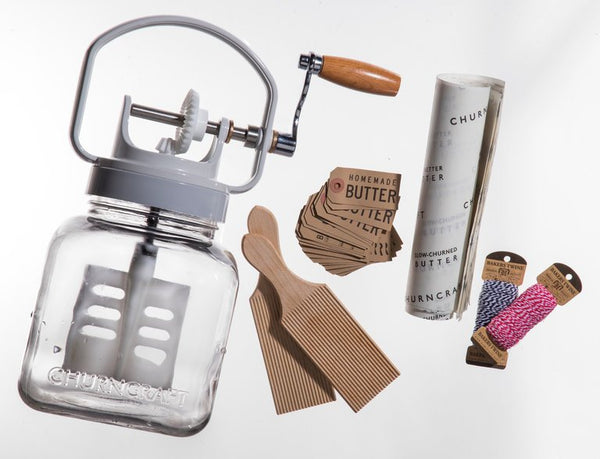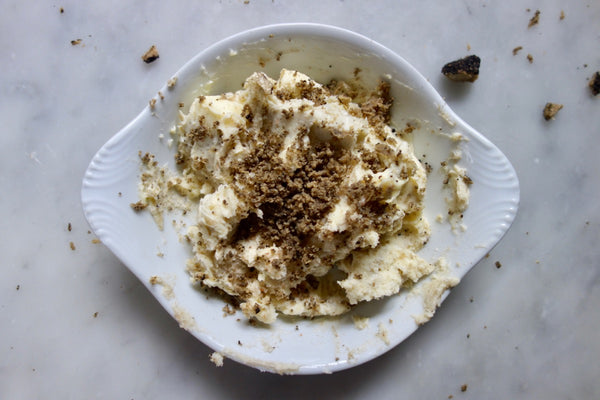Your Cart is Empty

From the mid-1800s through the 1940s, the hand-crank butter churn was the most commonly used household butter churn in America. Crank churns replaced simplistic wooden dash churns. It wasn’t long before crank churns were replaced by electric churns. Soon after that commercial butter production became widespread.
Crank churns came in all shapes and sizes. One early type of crank churn was the barrel churn, a simple device wherein the user turned a handle that directly rotated a dasher inside a stabilized barrel. There were no gears used in this iteration.
The first churns sold by the Dazey Churn Company of St. Louis were made of metal, predominantly tin. They were square in shape and sat in a metal frame. The tin churns were made in larger sizes and used by commercial dairies. Dazey quickly began to offer glass churns as well, which were smaller and designed for household use.
These gear driven, glass hand-crank churns were popularized by the Dazey Churn Company in the United States and the Blow Churn Company in England and Australia, but were sold by many other companies around the world. By 1912, we saw the advent of the sloped shoulder glass jar replacing the squared off glass jar, and in the 1940s we saw the iconic red ‘football’ gear housing combined with a distinctive tulip-shaped jar.
The “Kangaroo Minute Butter Churn” was a popular hand-crank churn in Australia. This metal churn had no rotating paddles inside, but was actually a container mounted on a table-top device. The hand-operated crank would rock the container back and forth, mimicking the kick of a Kangaroo’s legs. Guaranteed 40 rotations per minute, the company claimed this was the fastest working churn on the market.
After World War II, a commercial mechanical churn was developed in Europe. This new type of churn was used by all commercial dairy operations. Small hand crank glass churns were still used for household butter production, but these also saw competition from their electric counterparts.
Today, one can find all manner of crank churns in the antiques world. Millions were made, and many of these sturdy devices have survived today. For a comprehensive look at the vast variety of butter churns, check out the listings at Doug & Linda’s Dairy Antiques site. You might even one in your grandparent’s attic.
Comments will be approved before showing up.


What an honor to be featured in The New York Times! We are so proud to have gotten a stamp of approval from Florence Fabricant, food critic of the NYT.
